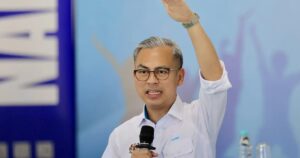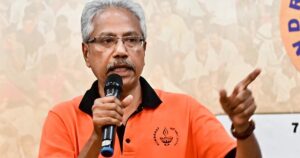
Concerns with readiness for retirement are intensifying, just three years after the government first allowed people to dip into their nest egg to get through job losses during the Covid-19 pandemic.
Employees Provident Fund (EPF) CEO Ahmad Zulqarnain Onn couldn’t have stressed the point more succinctly in his call for prompt measures to be taken to ensure Malaysians are both financially and socially prepared for longer lifespans.
Every projection now indicates that life expectancy could reach 81 years by 2050, just a quarter of a century away.
With a population rapidly ageing, and a fall in birth rates leading to a contracting tax base, the fear that future retirees may not have enough to get by is rising.
FMT takes a look at the escalating challenges of retirement affordability in Malaysia and how potential reforms today can secure workers’ financial futures tomorrow.
Overview of Malaysia’s retirement savings system
Malaysia’s primary retirement mechanism is EPF, a defined contribution (DC) scheme where individual and employer contributions, alongside investment returns, constitute an employee’s retirement savings.
A legacy defined benefit (DB) pension that ensures monthly payments based on final salary and tenure remains in effect for civil servants hired prior to October 2001.
Civil servants entering service after this date now participate in the same EPF system as private-sector employees, making their retirement income wholly dependent on accumulated contributions and investment performance.
The DB model, though secure for beneficiaries, imposes substantial long-term costs on public finances. Conversely, the DC approach is increasingly regarded as more sustainable globally, as it transfers investment and longevity risk away from the government, offers individuals enhanced control and portability, and presents fewer fiscal management challenges.
Impact of Covid‑19 withdrawals
Economic volatility of recent years has put the predictability of the DC model to the test.
More than 8.1 million EPF contributors withdrew over RM145 billion from their savings during the pandemic, often to offset job losses or settle debts.
Many have almost or entirely emptied out their reserves, with half of those aged 55 and below having been left with less than RM10,000 each. The median balance now stands at only RM10,898.
Rising life expectancy
The concerns are compounded by the fact that Malaysians now live longer. Men now average 74.8 years and women 78.9 years, up from 68.7 years for men and 73.4 years for women in 1990.
If one retires at 60, and assuming he or she needs RM1,500 a month to sustain a decent life, he will need at least RM360,000 in the bank to last him up to two decades.
However, as of 2023, nearly 74% of active EPF members had accumulated less than RM100,000 each, which is insufficient for even five to six years – without considering escalating healthcare and elderly care costs.
Demographic and fiscal challenges
As birth rates fall, the tax base is shrinking, making it unsustainable to continue with a DB pension system.
Malaysia’s tax-to-GDP ratio was just 12.6% in 2023, far below the Asia-Pacific average of 19.3% and the OECD average of 34%.
At the same time, the country’s life birth rate fell by 10.2% to 100,732 in Q2 2024 compared with the previous corresponding period, according to data from the department of statistics.
If this trend continues, there will be fewer taxpayers and EPF contributors going forward, slowing fund growth just as more people join the ranks of retirees.
In contrast, countries with generous DB pensions can sustain their retirees because they collect higher taxes and have built a large reserve.
On the other hand, Malaysia has limited tax revenue and a smaller reserve, making it impossible to sustain a fully tax-funded pay-as-you-go pension scheme without major reform.
Potential solutions
To safeguard against the risk of exhausting retirement reserves, Malaysia must promote greater financial literacy, enhance saving incentives, develop a modest social safety net, and establish integrated aged-care facilities to support its ageing population.
Introducing a hybrid pension scheme could restore some benefits of the former DB system while retaining sustainability.
Within this framework, employees would continue contributing to their EPF accounts; however, upon retirement, only a portion could be withdrawn as a lump sum, with the remainder distributed as monthly payments throughout their lifetime.
Such an arrangement partially reinstates the protective features of the legacy civil-service pension – a guaranteed lifelong minimum income – while avoiding the fiscal strain of a fully tax-funded model.
Singapore’s CPF Life serves as a relevant example, blending personal savings with lifelong payouts to prevent retirees from outliving their resources.
This proposed hybrid reform holds promise for ensuring retirees maintain a basic standard of living, even if individual savings are depleted.
Moreover, initiatives aimed at bolstering financial education and facilitating easier EPF top-ups – whether through matching contributions, tax incentives, or voluntary programmes – could meaningfully replenish and grow retirement savings.
Urgency is mounting for comprehensive reform. By integrating individual responsibility with inter-generational support, Malaysia can help ensure that today’s workers do not become tomorrow’s financially vulnerable retirees.






